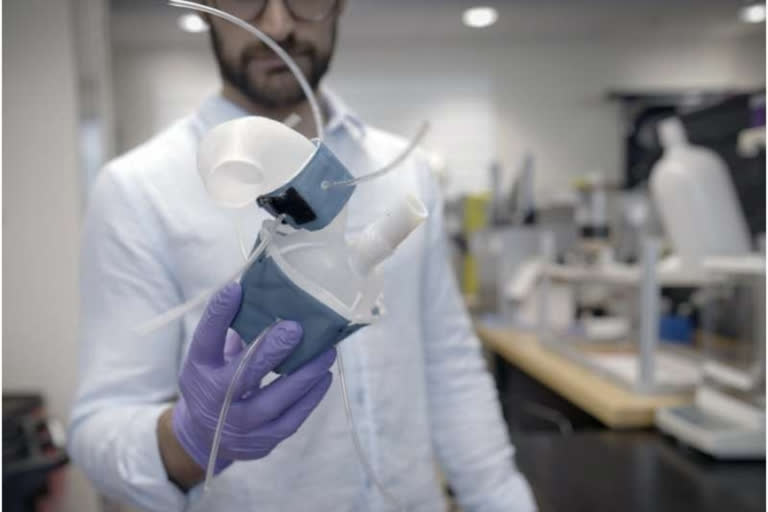New York: A team of engineers at the Massachusetts Institute of Technology, US, has developed a custom robotic heart that can help doctors tailor treatments to patients' specific heart form and function. The engineers developed a procedure to 3D print a soft and flexible replica of a patient's heart, including a patient's aorta - the major artery that carries blood out of the heart to the rest of the body.
The team led by mechanical engineering professor Ellen Roche said they can then control the replica's action to mimic that patient's blood-pumping ability via fabricated sleeves similar to blood pressure cuffs that wrap around a printed heart and aorta. The underside of each sleeve resembles precisely patterned bubble wrap.
When the sleeve is connected to a pneumatic system, researchers can tune the outflowing air to rhythmically inflate the sleeve's bubbles and contract the heart, mimicking its pumping action. The researchers can also inflate a separate sleeve surrounding a printed aorta to constrict the vessel. This constriction, they say, can be tuned to mimic aortic stenosis - a condition in which the aortic valve narrows, causing the heart to work harder to force blood through the body.
Also read: 'E-bandage' that speeds healing by 30 per cent developed
Doctors commonly treat aortic stenosis by surgically implanting a synthetic valve designed to widen the aorta's natural valve. However, the new procedure can help doctors to first print a patient's heart and aorta, then implant a variety of valves into the printed model to see which design results in the best function and fit for that particular patient.
The heart replicas could also be used by research labs and the medical device industry as realistic platforms for testing therapies for various types of heart disease. "All hearts are different," said Luca Rosalia, a graduate student in the MIT-Harvard Programme in Health Sciences and Technology.
"There are massive variations, especially when patients are sick. The advantage of our system is that we can recreate not just the form of a patient's heart, but also its function in both physiology and disease," Rosalia noted in a study appearing in the journal Science Robotics. Ultimately, the patient-specific replicas could help develop and identify ideal treatments for individuals with unique and challenging cardiac geometries, Roche said. (IANS)
(This story has not been edited by ETV Bharat and is auto-generated from a syndicated feed.)



